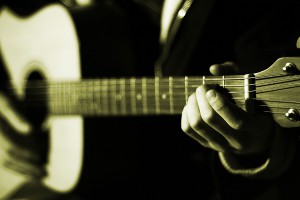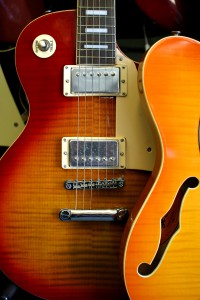Early Influences
Being surrounded by musicians in the family was what inspired me to learn how to play musical instruments, specifically the guitar. My grandparents, uncles and cousins were able to play the piano and the guitar. And I wanted to be able to play the songs that I enjoyed listening to.
The Musical Experience
I am the type of person who likes to do instead of watch someone else do it. I want to be able to experience music and not just listen to it. There is something magical, soothing and relaxing, when an instrument vibrates and creates a series of wonderful sounds from notes, projecting an amazing rush through the body, penetrating heart and soul. You are no longer a spectator but a part of the music itself.
Basic Chords
My uncle got me started when he handed me a guitar and taught me three basic chords – A, D, and E. These three chords are simple enough to learn, since they use only three fingers on the 1st and 2nd frets. These chords are a combination of 3 strings pressed and 3 strings opened, which would then produce a harmony of synced notes. And with these three basic chords, I was able to play a lot of songs, including Beatles songs, which I enjoyed playing. I was just doing simple rhythmic strumming with the song tempo.
Chord Progression
I teamed up with my cousins who also were learning at that time. We had an instant band, holding “jam sessions” every opportunity we could. And from those basic chords, I started looking up other chords from a chart that song books (compilation of music sheets) provided. I expanded my vocabulary of chords, which led to more complex music. And with more practice, whether playing along the actual songs or singing along with my guitar, I was able to learn the techniques with smoother chord transitions and progression, shifting from one chord to another, following the flow of the song.
Guitar Lessons
After learning guitar chords, I then started taking video classical guitar lessons. This series of lessons articulated the plucking of individual strings, therefore more emphasis on individual sounds/notes, as opposed to the one strummed sound of chords. But this lesson also put into perspective that these notes make up the chords. This meant that when you play the main melody of the song (classical approach), the harmony background is a series of chords that I learned first. I was then able to put the two together, enabling me to be more versatile in playing a range of music genres. It also allowed me to improvise and play as I hear and as I feel.
Continuous Learning
I have not and will never be done learning and improving in my guitar playing. There is so much music to play from which gives me so much inner joy. Now, I have the opportunity to teach and pass this skill and art of guitar playing to my sons.
Keys to Learning
My approach to learning to play the guitar was to simply take the following steps:
- Learn basic chords using charts and diagrams: dots mean you press the strings and no dots mean you keep them open, then strum all 6 strings.
- Learn rhythmic strumming with tempo: up down pattern or up, up down pattern, etc.
- Practice transition from chord to chord for continuity and music flow
- Learn plucking of individual string, in an arpeggio pattern for effects.
- Expand chord vocabulary. One new chord a week. Example: A to Am.
(About the author: Brian plays the piano, and guitar. During his high school days he played the clarinet for the band. With a Bachelor of Science degree in Botany, he became a high school instructor teaching Biology and Chemistry.)

